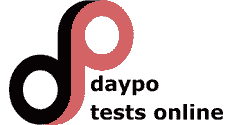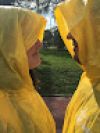AICLE EXAMEN FEBRERO 2025 (UNED)
|
|
Título del Test: AICLE EXAMEN FEBRERO 2025 (UNED) Descripción: Examen de febrero con las respuestas del E.D. |



| Comentarios |
|---|
NO HAY REGISTROS |
|
What does the phrase "awakening to languages" refer to?. The process of learning a single language in depth. An introduction to other languages. The study of the basic linguistics forms of an L2. What are co-official languages?. Dialects of a single language that are used interchangeably within informal and formal communication, but lack legal recognition or administrative application. Languages designated for ceremonial purposes within a region but without administrative or legal authority for government documentation or public communication. Two or more languages that are legally recognized within a specific political or administrative region, each granted equal status. What is play-based learning?. It is an unstructured educational method where children engage in recreational play without guidance, allowing them to learn through trial and error without teacher involvement. It is an instructional model that replaces traditional academic content with games and entertainment, prioritizing enjoyment over measurable learning outcomes or skill development. It is a pedagogical approach that integrates child-initiated play with intentional teaching to support cognitive, social, emotional, and physical development. Antúnez et al. stated in 1990 that... The communicative method is ideal for teaching an L2 in early childhood. Play-based learning is the only approach possible to teach foreign languages. There is no ideal method to teach languages. What is the Language Triptych?. It is a teaching strategy that focuses on the comparison of three different languages to highlight similarities and differences in grammar, phonetics, and vocabulary without applying the insights to communicative contexts. It is a framework for language learning and teaching that encompasses three interconnected dimensions. It is a classification system that divides languages into three categories based on their difficulty for learners. What are peer-to-peer interactions?. One-way exchanges of knowledge where one individual assumes a superior role as the sole provider of information, and the other acts exclusively as recipient. The reciprocal exchanges of information, ideas, or support between individuals of equal status, such as students working collaboratively. They are informal social interactions that occur outside academic or structured settings. What is identity formation?. It is a fixed process completed during childhood, where individuals solidify their sense of self based on innate personality traits. It is the dynamic and ongoing process through which individuals develop a sense of self. It is the development of a single, universal identity shared by all individuals within a particular culture. García and Sánchez (2018) studied the benefits of translanguaging... For the improvement in minority languages for high academic performance students. For language learning. For the problems in motivation for English language speakers. The minimum curriculum of Early Childhood Education was established by the central Government and determined the objectives, key and specific competences, and: Assessment knowledge and basic criteria. Assessment criteria and basic knowledge. Assessment methodologies and integrated contents. The Centre's Language Project is a document that includes all the decisions regarding the use of teaching and learning of: Projects. Languages. Skills. Learning situations should start from clear and precise __________ and integrate a set of basic knowledge. Tasks. Objectives. Methods. BICS means: Behavioural Indicators of Communicative Success. Basic Interpersonal Communicative Skills. Building Inclusive Communication Standards. Tapping into children's prior knowledge and experiences as they begin to learn new knowledge is the basis of: Translanguaging. A cross-curricular and holistic approach. meaningful learning. Greeting and farewell songs, working with the calendar days and months, and class register are examples of: Daily routines. Sitting modes. Task boxes. After listening to a story, promoting reasoning, finding alternative endings and evaluating happenings or attitudes helps promote which of the 4 Cs?. Content. Culture. Cognition. To encourage language use in the classroom, use of formulaic chunks and slot and frame structures are recommended. Which of the following oculd be described as a "slot and frame" construction?. Children, sit down!. What a ____ summer day!. Be quiet, Niños, please. Document analysis, observation, and input from involved individuals are three fundamental techniques for the evaluation of the centre's project for: Dissemination of results. Information collection. Information of families. The heterogeneity among multilingual children complicates: The establishment of reliable assessments. The formulation of comprehensive multilingual learning theories. The other two answers are compatible. Dual Language Learners' language development varies, influenced by factors like: Skill, intention, and adaptability. Age, exposure, and context. Knowledge, practice, and perspective. As outlined in Real Decree 95/2022, parents and legal guardians also have a. Insignificant role. Participatory role. Playful role. |





